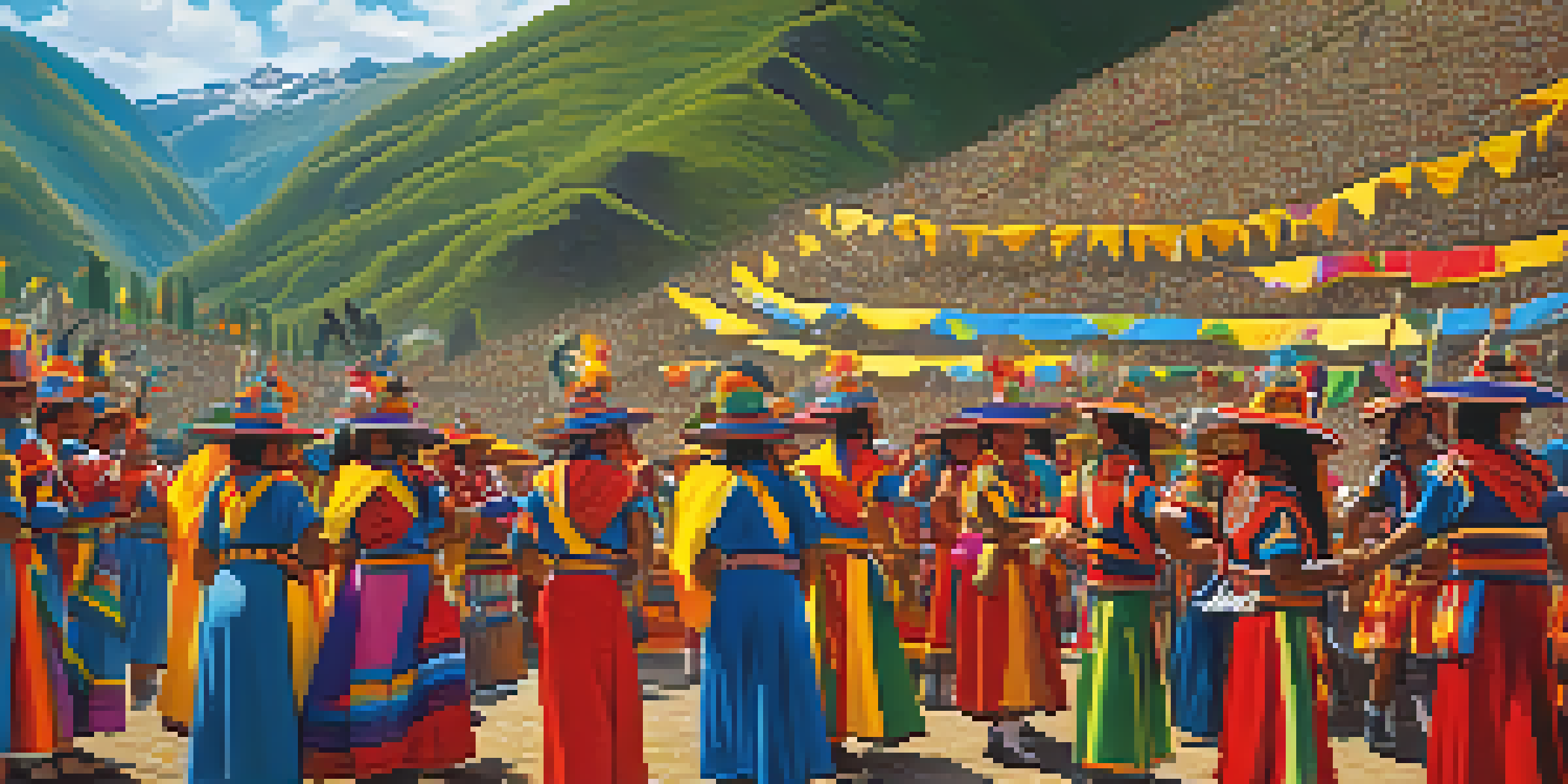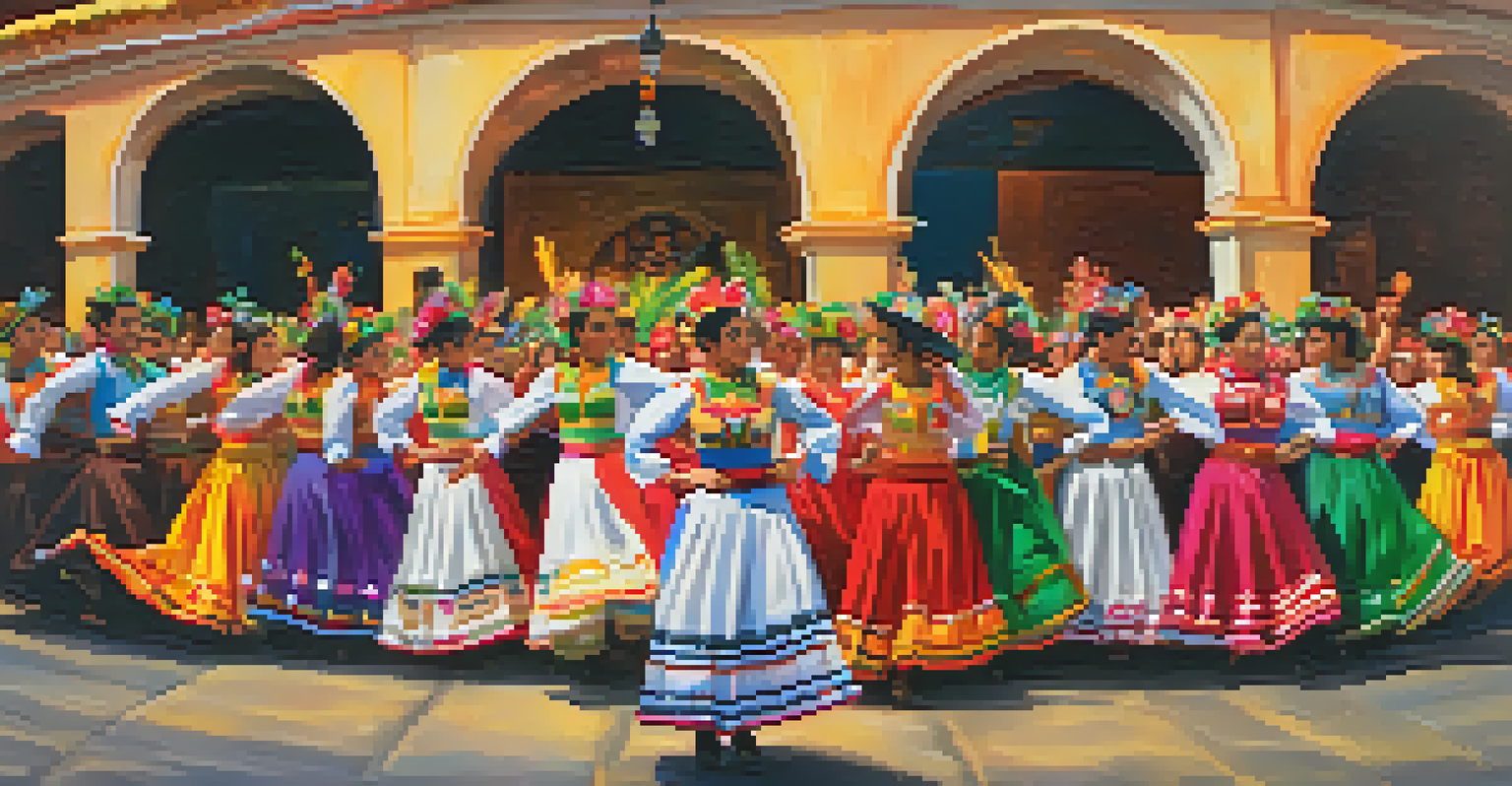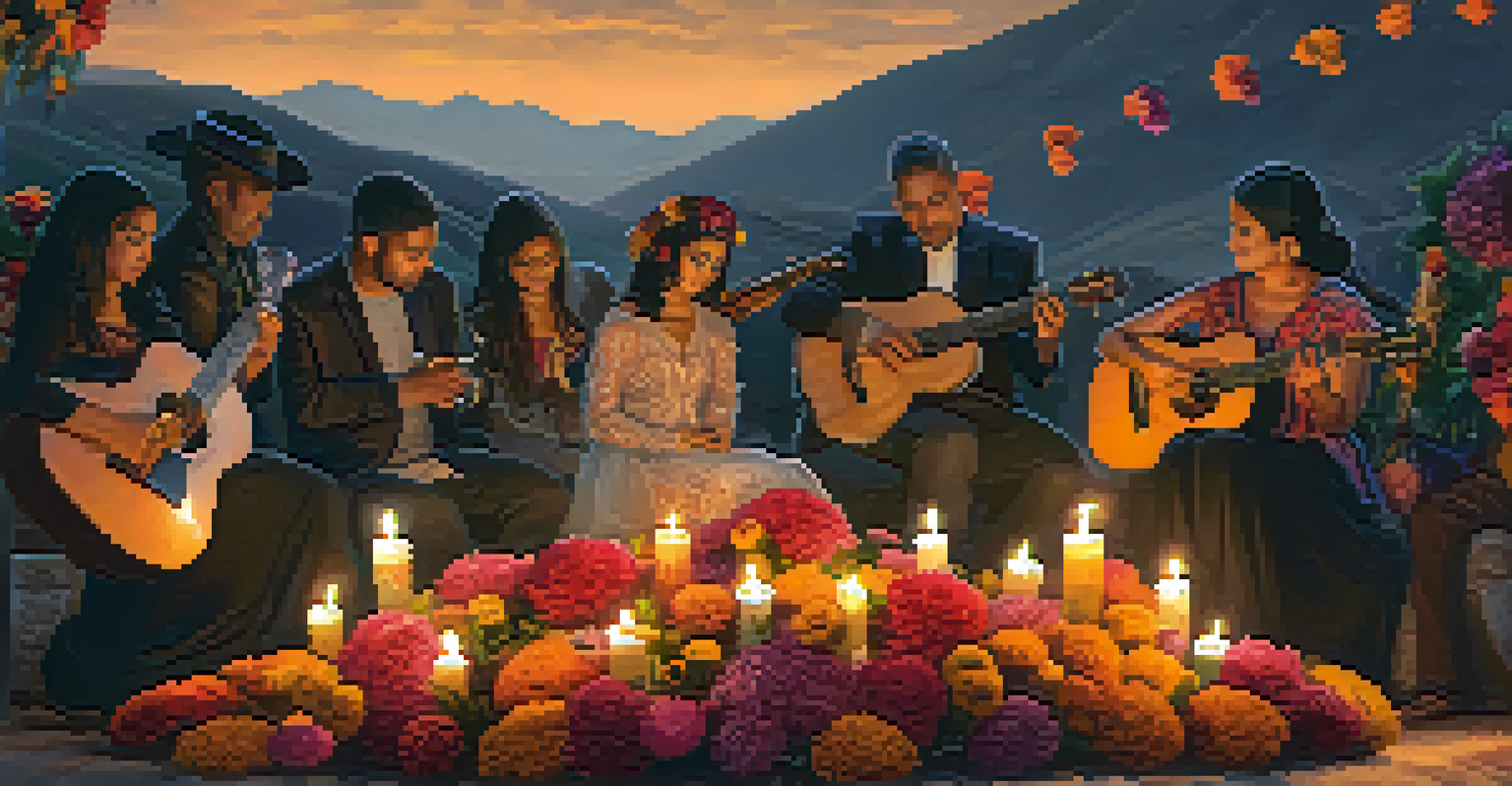The Role of Music in Celebrating Peru's Cultural Festivals

Music as a Heartbeat of Peruvian Festivals
In Peru, music isn't just an art form; it's the very pulse of cultural festivals. From the Andes to the Amazon, every celebration resonates with traditional melodies that tell stories of the land and its people. These tunes often evoke emotions that connect attendees to their heritage, creating a sense of unity and belonging.
Music is the universal language of mankind.
For example, during the Inti Raymi festival, music fills the air as participants honor the sun god with vibrant performances. The blending of instruments, like the charango and panpipes, creates a soundscape that transports everyone into the heart of Incan history. This celebration illustrates how music can weave together the past and present, urging communities to remember their roots.
Moreover, the role of music extends beyond mere entertainment; it serves as a means of cultural transmission. Young generations learn traditional songs and dances, ensuring that the rich tapestry of Peru's heritage continues to thrive and evolve for years to come.
Instruments That Define Peruvian Traditions
The distinctive sound of Peruvian music comes from a variety of traditional instruments that have been passed down through generations. Instruments like the cajón, a box drum, and the zampoña, a pan flute, are integral to many festivals, enhancing the celebratory atmosphere. Each instrument carries its own story and significance, contributing layers of meaning to the music played.

At the Fiesta de la Candelaria, for instance, the vibrant rhythms of the cajón accompany colorful dances that depict the cultural heritage of the region. This festival, recognized by UNESCO, showcases how the combination of music and dance creates a powerful expression of identity. The lively beats invite everyone to join in, breaking barriers and fostering a communal spirit.
Music Unites Peruvian Heritage
In Peru, music serves as a vital connection to cultural festivals, fostering unity and a sense of belonging among communities.
Additionally, modern adaptations of these traditional instruments have emerged, showcasing the versatility of Peruvian music. By blending contemporary styles with folk elements, musicians are keeping the spirit of these instruments alive while appealing to younger audiences, bridging the gap between past and present.
Dance and Music: A Symbiotic Relationship
In Peru's cultural festivals, dance and music are inseparable partners, each enhancing the other to create a captivating experience. Traditional dances, such as the Marinera or the Huaylas, are choreographed to specific rhythms, making music an essential element of the performance. This synergy not only entertains but also tells stories that reflect the region's rich history and social customs.
Where words fail, music speaks.
Take the Marinera festival, for example, where couples elegantly dance to the melodies of the guitar and violin. This dance symbolizes courtship and love, with each movement mirroring the music's intricate patterns. The result is a beautiful display that resonates with both locals and visitors, fostering appreciation for Peruvian culture.
Furthermore, the participation of the audience in these dance forms is another testament to the power of music. Festivals invite everyone to join in, breaking down the walls of formality and encouraging people to express themselves through movement, united in celebration.
Music as a Tool for Cultural Identity
Music plays a crucial role in shaping and reinforcing Peru's cultural identity, acting as a vehicle for expression and pride. During festivals, traditional songs often recount historical events, struggles, and triumphs, allowing communities to reflect on their shared experiences. This collective memory fosters a deep sense of belonging among participants.
For example, the celebration of the Fiesta de San Juan highlights the importance of the river and the land, with music that emphasizes the connection to nature. Through lyrics that speak to the environment, communities honor their ancestors' relationship with the earth, reinforcing their cultural identity in a rapidly changing world.
Instruments Shape Cultural Identity
Traditional instruments like the cajón and zampoña play an essential role in enhancing the celebratory atmosphere of festivals and conveying the region's cultural significance.
Additionally, as global influences seep into local traditions, music acts as a battleground for cultural preservation. Festivals provide a platform for artists to assert their heritage, ensuring that traditional sounds remain relevant and cherished amidst modernity.
Festivals as a Space for Musical Innovation
Peru's cultural festivals are not just about preserving traditions; they also serve as spaces for musical innovation. Artists often experiment with blending traditional and contemporary genres, creating fresh sounds that resonate with diverse audiences. This dynamic interplay showcases the evolving nature of Peruvian music, reflecting the country's vibrant cultural landscape.
During the Festival de la Música, for instance, new musical genres emerge, combining Andean folk music with rock, hip hop, and electronic elements. This evolution encourages younger musicians to explore their creativity while honoring their roots, resulting in a rich tapestry of sound that appeals to various demographics.
Moreover, such innovation fosters a sense of community among artists and audiences alike. By embracing new styles while celebrating traditional ones, festivals create an inclusive environment where everyone can find their place, encouraging cultural exchange and dialogue.
The Emotional Impact of Festival Music
One of the most profound aspects of music during Peru's cultural festivals is its emotional impact. The melodies and rhythms evoke feelings ranging from joy to nostalgia, allowing attendees to connect with their emotions in a communal setting. This shared experience creates lasting memories and bonds among participants.
Consider the emotional weight of the music played during the Día de los Muertos celebration. Songs often reflect themes of love and remembrance, creating an atmosphere that honors the departed while celebrating life. The combination of music and ritual fosters a unique space for reflection, allowing people to process their grief collectively.
Festivals Inspire Musical Innovation
Cultural festivals in Peru act as platforms for musical experimentation, blending traditional sounds with contemporary genres to engage diverse audiences.
Additionally, the uplifting nature of festival music invites spontaneous celebrations, encouraging laughter, dancing, and connection. This emotional resonance is what makes Peruvian festivals so memorable, as music transforms ordinary moments into extraordinary experiences filled with joy and vitality.
Conclusion: Music's Enduring Legacy in Peruvian Culture
In conclusion, music plays an indispensable role in celebrating Peru's cultural festivals, serving as both a unifying force and a means of expression. From traditional instruments and dances to modern interpretations, the dynamic nature of Peruvian music enriches these celebrations, ensuring that they remain vibrant and relevant.
As communities come together to honor their heritage through music, they also pave the way for future generations to embrace their cultural identity. This enduring legacy not only preserves the past but also nurtures creativity and innovation, allowing the cultural tapestry of Peru to flourish.

Ultimately, the role of music in these festivals extends beyond entertainment; it fosters a sense of belonging and pride, creating a shared experience that resonates with everyone. Through rhythm and melody, Peru's cultural festivals become a celebration of life, love, and the rich diversity that defines this beautiful country.